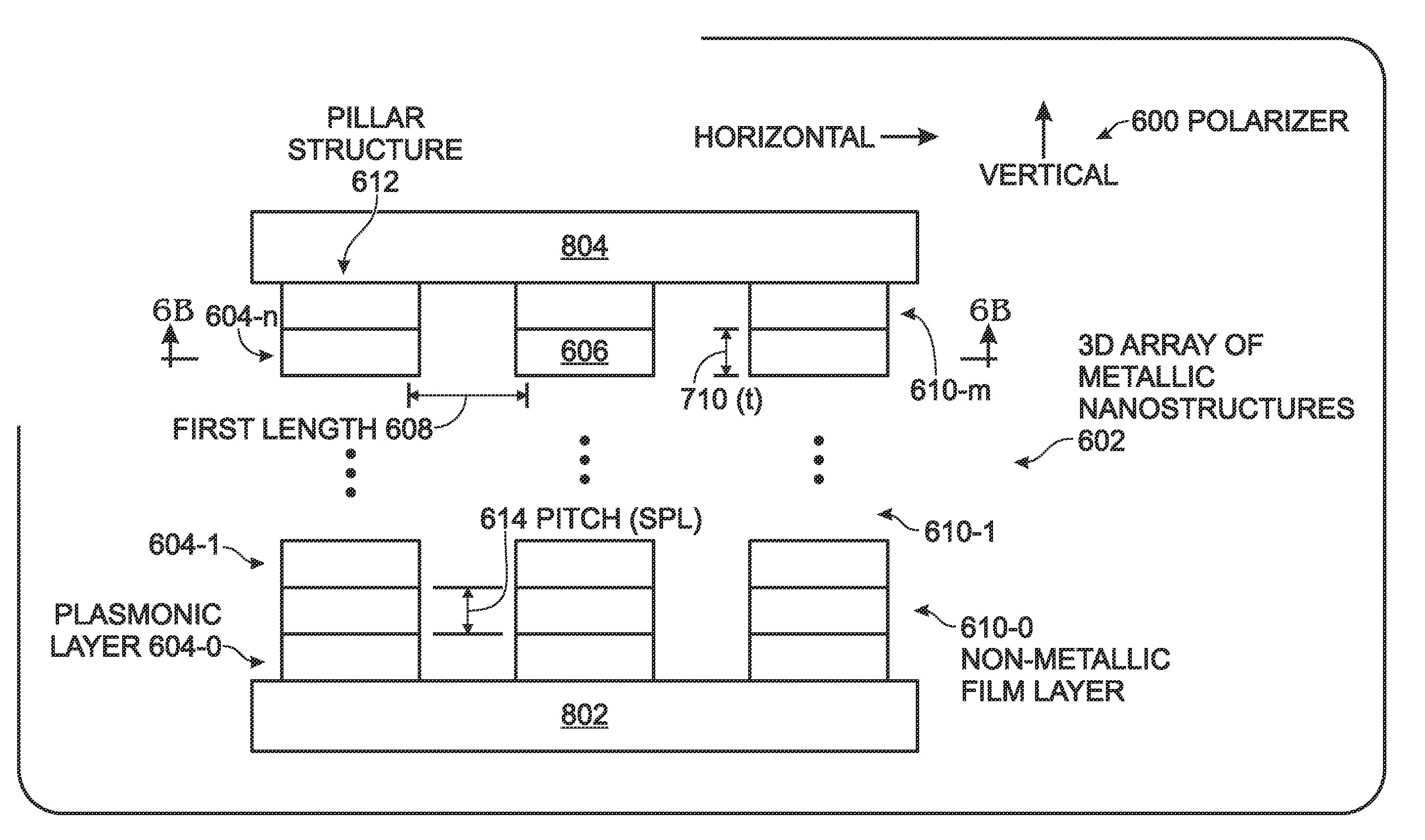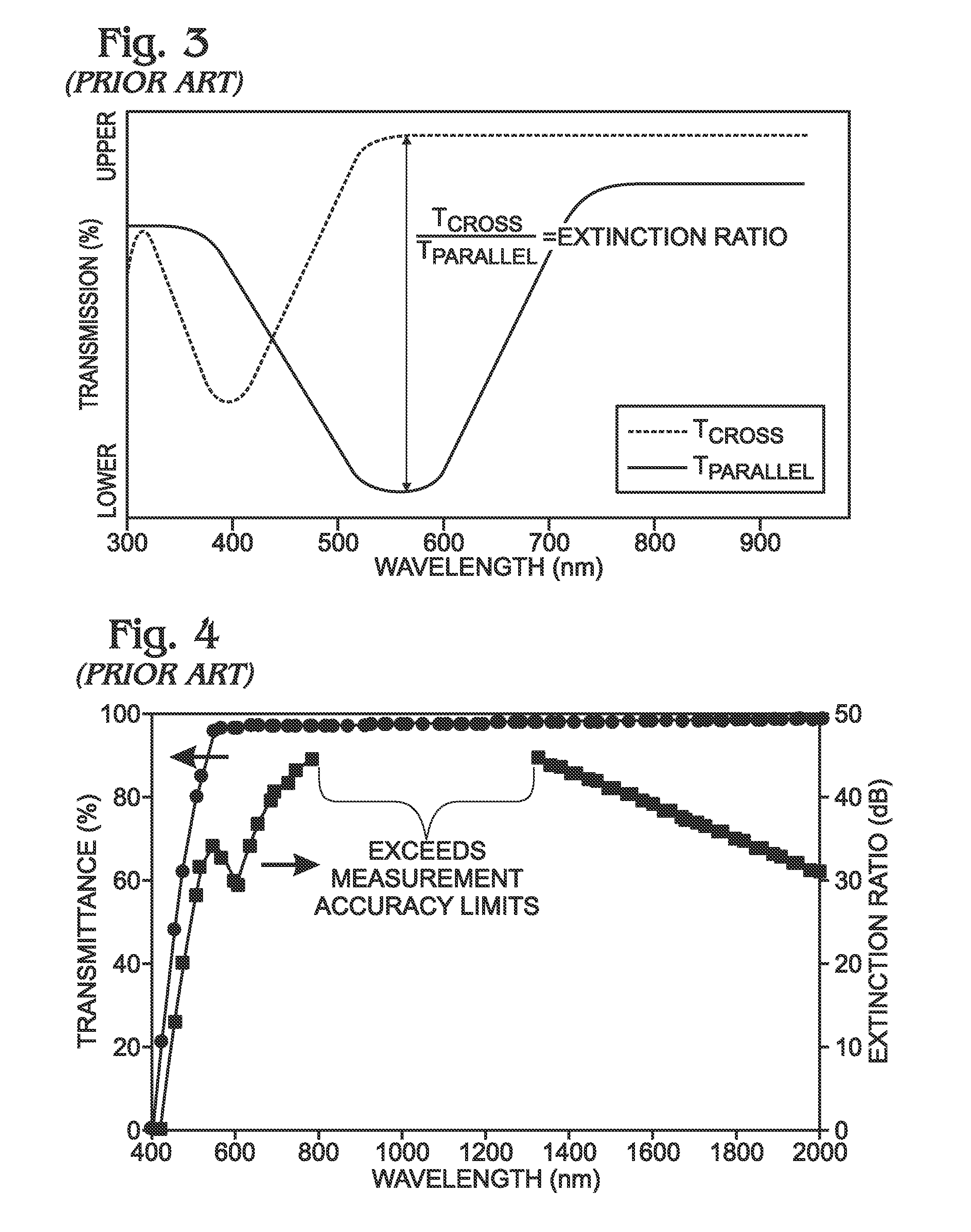Plasmonic In-Cell Polarizer
a plasmonic polarizer and in-cell technology, applied in the field of flat panel displays, can solve the problems of low optical efficiency, limited display integration capability, scattering of light, etc., and achieve the effects of reducing power consumption, improving visual performance, and high polarization performan
- Summary
- Abstract
- Description
- Claims
- Application Information
AI Technical Summary
Benefits of technology
Problems solved by technology
Method used
Image
Examples
Embodiment Construction
[0050]FIGS. 6A and 6B are, respectively, partial cross-sectional and plan views of a plasmonic polarizer. The polarizer 600 comprises a three-dimensional (3D) array of metallic nanostructures 602 comprising a plurality of plasmonic layers 604-0 through 604-n, where each layer includes a pattern of metallic nanostructures 606. The nanostructures 606 have dimensions and periods between adjacent nanostructures less than a first length 608, where the first length is equal to (a first wavelength of light / 2). For example, the first wavelength of light may be 450 nm. The 3D array of metallic nanostructures 602 also comprises a plurality of non-metallic film layers 610-0 through 610-m, with at least one non-metallic film layer interposed between adjacent plasmonic layers. The values of (n) and (m) are positive integer variables not limited to any particular value. The value of (m) need not necessarily equal the value of (n). Each non-metallic film layer may be comprised of a material transp...
PUM
| Property | Measurement | Unit |
|---|---|---|
| wavelength | aaaaa | aaaaa |
| humidity | aaaaa | aaaaa |
| humidity | aaaaa | aaaaa |
Abstract
Description
Claims
Application Information
 Login to View More
Login to View More - R&D
- Intellectual Property
- Life Sciences
- Materials
- Tech Scout
- Unparalleled Data Quality
- Higher Quality Content
- 60% Fewer Hallucinations
Browse by: Latest US Patents, China's latest patents, Technical Efficacy Thesaurus, Application Domain, Technology Topic, Popular Technical Reports.
© 2025 PatSnap. All rights reserved.Legal|Privacy policy|Modern Slavery Act Transparency Statement|Sitemap|About US| Contact US: help@patsnap.com



